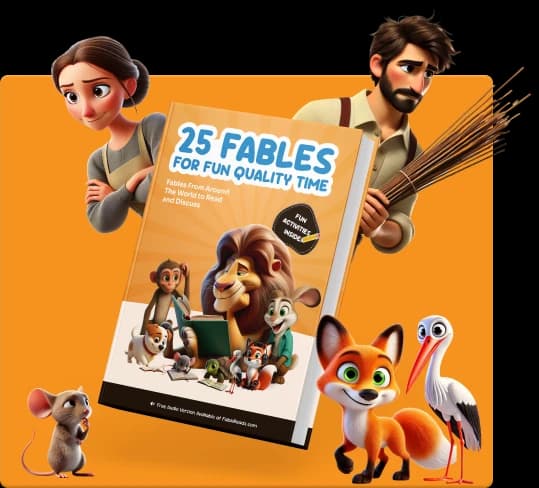Aesop | Greece
La Cigarra y la Hormiga
Una hormiga trabaja duro y guarda comida para el invierno, mientras el saltamontes juega y al final se queda sin comida.

Había una vez, en un gran campo, vivían una hormiga y un saltamontes. La hormiga era muy trabajadora. Durante los días soleados de verano, recogía comida para el invierno. Cada día encontraba granos de trigo y pedazos de maíz y los llevaba a su hogar.
El saltamontes, sin embargo, amaba divertirse. Pasaba sus días cantando canciones y bailando bajo el sol. Tocaba su violín y saltaba y no se preocupaba por nada. Nunca pensaba en lo que necesitaría en el futuro y no guardaba comida para los tiempos fríos.
Entonces, llegó el invierno. Hacía mucho frío y no había comida por ningún lado. La hormiga estaba cómoda y tenía mucho para comer en su cálido hogar. Pero el saltamontes tenía mucha hambre y no tenía un lugar donde calentarse.
Sintiendo tristeza y arrepentimiento, el saltamontes fue a casa de la hormiga y le pidió un poco de comida. La hormiga le preguntó: “¿Por qué no recogiste comida durante el verano como yo? Ahora tienes que enfrentar las consecuencias de no haberte preparado.”
Después de decir esto, la hormiga regresó a su casa, dejando al saltamontes afuera en el frío. El saltamontes se sintió muy triste y se arrepintió de no haber trabajado duro cuando tuvo la oportunidad.
Compra un Libro y Ayuda a Llevar Fábulas al Mundo
Disfruta de 25 fábulas seleccionadas de por vida, impresas. Cada compra apoya historias gratuitas para niños, padres y maestros en todo el mundo en fablereads.com

















